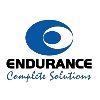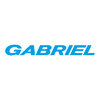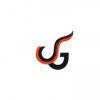Filter interviews by
Automobile Products Of India Mechanical Maintenance Engineer Interview Questions, Process, and Tips
Automobile Products Of India Mechanical Maintenance Engineer Interview Experiences
1 interview found
I applied via Company Website and was interviewed in Sep 2021. There were 4 interview rounds.
Interview Questionnaire
13 Questions
- Q1. What is engine ??
- Ans.
An engine is a machine that converts energy into mechanical force or motion.
Engines are used in various applications such as automobiles, aircraft, and power plants.
They typically operate by burning fuel to generate heat, which is then converted into mechanical energy.
Engines can be classified into different types, including internal combustion engines, steam engines, and electric motors.
Examples of engines include car...
- Q2. What is ductlity ??
- Ans.
Ductility is the ability of a material to deform under tensile stress without breaking.
Ductility is a property of metals and alloys.
It is measured by the percentage of elongation or reduction in cross-sectional area before fracture.
Ductile materials can be drawn into wires or hammered into thin sheets.
Examples of ductile materials include gold, silver, copper, and aluminum.
Ductility is important in engineering applicat...
- Q3. What is break efficiency ??
- Ans.
Break efficiency is the ratio of actual braking power to the theoretical braking power.
It is a measure of how effectively a brake system can stop a vehicle.
It is expressed as a percentage.
Factors affecting break efficiency include brake pad material, rotor size, and temperature.
A higher break efficiency means the brake system is more effective at stopping the vehicle.
Break efficiency can be calculated using the formula...
- Q4. What is centrifugal pump?
- Ans.
A centrifugal pump is a mechanical device that uses centrifugal force to transport fluids.
It consists of an impeller that rotates to create a flow of fluid.
The fluid enters the pump through the center of the impeller and is thrown outward by centrifugal force.
The fluid then exits the pump through a discharge nozzle.
Centrifugal pumps are commonly used in industries such as oil and gas, chemical, and water treatment.
Exam...
- Q5. Difference between 2 stroke and 4 stroke engine ?
- Ans.
2 stroke engines have a power stroke in each revolution, while 4 stroke engines have a power stroke in every other revolution.
2 stroke engines have a simpler design and are lighter than 4 stroke engines.
2 stroke engines have a higher power-to-weight ratio compared to 4 stroke engines.
4 stroke engines are more fuel-efficient and produce less pollution than 2 stroke engines.
Examples of 2 stroke engines include chainsaws,...
- Q6. What is stress ?
- Q7. What is force ?
- Ans.
Force is a physical quantity that can change the motion of an object.
Force is measured in Newtons (N).
It can be a push or a pull.
Force can change the shape or size of an object.
Examples of force include gravity, friction, and tension.
Force is a vector quantity, meaning it has both magnitude and direction.
- Q8. What is strain ?
- Ans.
Strain is the deformation or change in shape of a material due to an applied force.
Strain is a measure of how much a material deforms under stress.
It is calculated as the change in length or shape of a material divided by its original length or shape.
Strain can be either compressive or tensile, depending on the direction of the applied force.
Examples of strain include stretching a rubber band, bending a metal rod, or c
- Q9. Full from of CNC?
- Ans.
CNC stands for Computer Numerical Control.
CNC is a manufacturing process that uses computers to control machine tools.
It involves the use of software to control the movement of machinery and tools.
CNC machines are used in a variety of industries, including automotive, aerospace, and electronics.
Examples of CNC machines include lathes, mills, routers, and plasma cutters.
- Q10. What is poison ratio ?
- Ans.
Poison ratio is the ratio of lateral strain to longitudinal strain when a material is subjected to stress.
It is also known as transverse strain ratio or lateral strain coefficient.
It is a measure of the deformation of a material under stress.
It is calculated as the negative ratio of lateral strain to longitudinal strain.
For most materials, the poison ratio ranges from 0.25 to 0.35.
Rubber has a very low poison ratio, wh
- Q11. What is sheer stress ?
- Q12. What is pump efficiency?
- Ans.
Pump efficiency is the ratio of the output power to the input power of a pump.
Efficiency is important for reducing energy consumption and operating costs.
It is calculated by dividing the pump's output power by its input power.
Factors that affect pump efficiency include impeller design, flow rate, and head.
A more efficient pump will require less energy to achieve the same flow rate and head.
Regular maintenance and prope
- Q13. What is bulk modules
- Ans.
Bulk modules are pre-fabricated units used in construction and engineering projects.
Bulk modules are pre-fabricated units that can be easily transported and assembled on-site.
They are commonly used in construction and engineering projects to save time and reduce costs.
Examples of bulk modules include pre-fabricated walls, floors, and roofs for buildings, as well as pre-fabricated piping and electrical systems for indus...
Interview Preparation Tips
Skills evaluated in this interview
Top trending discussions






Interview questions from similar companies

Mechanical Maintenance Engineer Interview Questions & Answers
Endurance Technologiesposted on 15 Jun 2021
I applied via Company Website and was interviewed in Dec 2020. There was 1 interview round.
Interview Questionnaire
4 Questions
- Q1. Type of compressor
- Ans.
There are various types of compressors used in mechanical maintenance, including reciprocating, rotary, centrifugal, and axial flow compressors.
Reciprocating compressors use a piston to compress the gas, similar to the engine of a car.
Rotary compressors use rotating impellers or screws to compress the gas.
Centrifugal compressors use a rotating impeller to accelerate the gas and then convert the kinetic energy into pres...
- Q2. Type 1. positive displacement 2.dynamic Positive =Reciprocating &Rotary Reciprocating =single acting ,double acting ,diaphargam
- Q3. Rotary =Vane ,screw ,lobe.
- Q4. Dynamic .=centrifugal,mixed flow,axial
Interview Preparation Tips

Mechanical Maintenance Engineer Interview Questions & Answers
Spark Mindaposted on 28 Oct 2024
I applied via Naukri.com and was interviewed before Oct 2023. There were 2 interview rounds.
(3 Questions)
- Q1. Mechanical maintenance
- Q2. Mechanical maintenance department
- Q3. Mechanical Maintenance
(2 Questions)
- Q1. Mechanical maintenance
- Q2. Mechanical maintenance department
Interview Preparation Tips

Mechanical Maintenance Engineer Interview Questions & Answers
Tata AutoComp Systemsposted on 11 Feb 2023
(3 Questions)
- Q1. What is bearing and types
- Ans.
A bearing is a mechanical component that supports the rotating shaft of a machine, reducing friction and enabling smooth movement.
Bearings are used in various applications such as automobiles, industrial machinery, and household appliances.
There are several types of bearings, including ball bearings, roller bearings, and plain bearings.
Ball bearings consist of balls enclosed between two rings and are commonly used in a...
- Q2. What is types of bearing
- Ans.
Bearings are machine elements that reduce friction between moving parts. There are several types of bearings.
Plain bearings
Rolling element bearings
Jewel bearings
Fluid bearings
Magnetic bearings
- Q3. There are six types.
Interview Preparation Tips
Experience - 2 year fitter maintenance

I applied via Job Fair and was interviewed before Mar 2021. There were 4 interview rounds.

Topic for discussion
(2 Questions)
- Q1. Technical education in subject
- Q2. Diploma realated couse
(5 Questions)
- Q1. What is your family background?
- Q2. What are your strengths and weaknesses?
- Ans.
My strengths include problem-solving, attention to detail, and strong technical skills. My weaknesses include being overly critical of my own work and sometimes struggling with delegation.
Strength: Problem-solving - I enjoy analyzing complex problems and finding efficient solutions.
Strength: Attention to detail - I have a meticulous approach to my work, ensuring accuracy and quality.
Strength: Strong technical skills - ...
- Q3. Tell me about yourself.
- Q4. I am Shivam Singh and graduation complete in Mechanical Engineering and also done my diploma mechanical automobile in ghaziabad
- Q5. I am hardworking I am honesty I am work in complete in time
Interview Preparation Tips

I applied via Walk-in and was interviewed before May 2021. There were 4 interview rounds.
Group discussed on Di
scipline spelling topic and explain
(1 Question)
- Q1. Self introduction explain
(1 Question)
- Q1. Explain and overall experience
(1 Question)
- Q1. Discipline and working hour and salary discuss
Interview Preparation Tips

I applied via Campus Placement and was interviewed before Mar 2021. There were 3 interview rounds.

(2 Questions)
- Q1. Face to face depend on interview skill and confidence
- Q2. Skill and communication in the opportunity in the company
(2 Questions)
- Q1. Why should we hire you?
- Ans.
I have a strong background in production engineering and a proven track record of improving efficiency and reducing costs.
I have a Bachelor's degree in Production Engineering and have completed internships at two leading manufacturing companies.
I have successfully implemented process improvements that resulted in a 20% increase in production output at my previous job.
I am skilled in using various production software an...
- Q2. I am working in denso India pvt Ltd I am working in honsety and I am also good confidence and hardworking
Interview Preparation Tips

Interview Questionnaire
2 Questions
- Q1. Introduce yourself
- Q2. First start your name location then family details , your qualifications in last your experience if you have otherwise no need

I applied via Walk-in and was interviewed before Mar 2020. There were 3 interview rounds.
Interview Questionnaire
2 Questions
- Q1. The First question was tell me about yourself and whats your goal in life?
- Q2. I said only those things which is not written in my resume and about my goal I said I want to became a successful person in my life and achieving power for doing everything.
Interview Preparation Tips
And during interview please feel free and fully confidence.

I applied via Company Website and was interviewed in Oct 2019. There were 3 interview rounds.
Interview Questionnaire
2 Questions
- Q1. Electronics Engineering
- Q2. Hard work
Interview Preparation Tips
Good afternoon
My name is pavan Kumar mayank/Nagendra Kumar mayank
DOB,12/05/1998
High school,2013 ,72%
Inter 2015,76%
Diploma2019,68%
Automobile Products Of India Interview FAQs
Tell us how to improve this page.
Automobile Products Of India Interviews By Designations
- Automobile Products Of India Heat Treatment Supervisor Interview Questions
- Automobile Products Of India Mechanical Maintenance Engineer Interview Questions
- Automobile Products Of India Automobiles Interview Questions
- Automobile Products Of India Diploma Mechanical Engineer Interview Questions
- Automobile Products Of India Business Operations Analyst Interview Questions
- Automobile Products Of India Back Office Executive Interview Questions
Interview Questions for Popular Designations
- Mechanical Maintenance Fitter Interview Questions
- Maintenance Engineer Interview Questions
- Mechanical Maintenance Technician Interview Questions
- Mechanical Maintenance Supervisor Interview Questions
- Manager Mechanical Maintenance Interview Questions
- Electrical Maintenance Engineer Interview Questions
- Maintenance Manager Interview Questions
- Mechanical Maintenance Foreman Interview Questions
- Show more
Mechanical Maintenance Engineer Interview Questions from Similar Companies
|
Sales Executive
15
salaries
| ₹1.7 L/yr - ₹5 L/yr |
|
Senior Executive
6
salaries
| ₹2.4 L/yr - ₹4.5 L/yr |
|
Electrician
5
salaries
| ₹2 L/yr - ₹2.5 L/yr |
|
Sales Officer
5
salaries
| ₹1.7 L/yr - ₹5 L/yr |
|
Diploma Mechanical Engineer
5
salaries
| ₹1 L/yr - ₹3.2 L/yr |

JBM Group

Subros

Varroc Group

Endurance Technologies
- Home >
- Interviews >
- Automobile Products Of India Interview Questions >
- Automobile Products Of India Mechanical Maintenance Engineer Interview Questions








